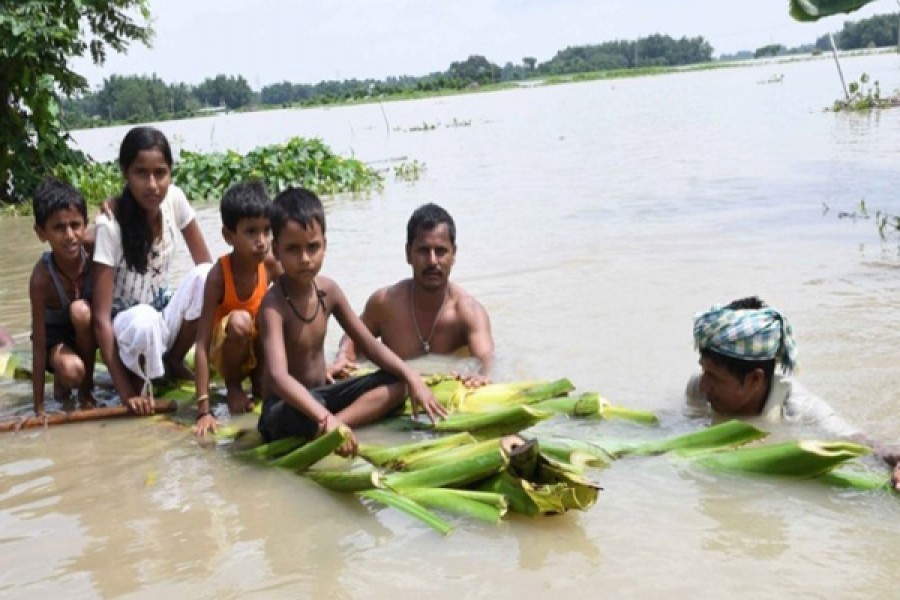The numbers of children affected by flooding in Bangladesh, Chad, Gambia, and Pakistan are the highest in over 30 years, according to a latest UNICEF report.
As COP27 gets underway in Egypt, UNICEF also warns this year has brought overwhelming flooding to at least 27.7 million children in 27 countries worldwide.
A large majority of the 27.7 million children affected by flooding in 2022 are among the most vulnerable and are at high risk of a multitude of threats, including death by drowning, disease outbreaks, a lack of safe drinking water, malnutrition, disruption in learning, and violence.
"We are seeing unprecedented levels of flooding all around the world this year, and with it, an explosion in threats to children," said Paloma Escudero, head of the UNICEF delegation for COP27. "The climate crisis is here. In many places, the flooding is the worst it has been in a generation, or several. Our children are already suffering at a scale their parents never did."
The aftermath of floods is often more deadly for children than the extreme weather events that caused the flooding. In 2022, floods will have contributed to the increased spread of major killers of children, such as malnutrition, malaria, cholera, and diarrhoea.
In Pakistan, more than one in nine children under the age of five were admitted to health facilities in flood-affected areas of Sindh and Balochistan.
In Chad, 465,030 hectares of farmland were destroyed, worsening the already dire food insecurity situation.
In Malawi, torrential rains and flooding caused by tropical storm Ana in January 2022 caused extensive damage to water and sanitation systems, which created the perfect conditions for a cholera outbreak. The outbreak has claimed the lives of 203 people, of whom 28 are children. To date, 1,631 children have been infected with cholera.
Together with other climate shocks and the conflict, floods have caused the projected number of children in South Sudan facing high levels of food insecurity to surpass the rates seen during the conflict in 2013 and 2016. Additionally, the United Nations recently warned that some communities are likely to face starvation if humanitarian assistance is not sustained and climate adaptation measures are not scaled-up.
In addition to threatening the lives of millions of children, the flood waters have disrupted essential services and displaced countless families:
The recent floods in Pakistan damaged or destroyed nearly 27,000 school buildings, forcing 2.0 million children to miss school.
In South Sudan, 95 UNICEF supported nutrition sites have been affected by floods, hampering the delivery of life-saving and preventative malnutrition services for 92,000 children.
An estimated 840,000 children were displaced by floods in Nigeria in recent months.
Heavy rains and flooding in Yemen triggered floods causing extensive damage to shelters in displacement sites. Up to 73,854 households were affected, and 24,000 households were displaced.
"COP27 provides an opportunity to chart a credible roadmap with clear milestones for finance for climate adaptation and solutions for loss and damage," said Paloma Escudero. "Young people from the most affected places on Earth are drowning in climate inaction. Enough is enough. Lives are on the line – children need action now."
As well as pressing governments and big business to rapidly reduce emissions, UNICEF urges leaders to take immediate action to protect children from climate devastation by adapting the critical social services they rely on. Adaptation measures, like creating water, health and education systems that stand up to flooding and drought, will save lives.
Last year, developed countries agreed to double support for adaptation to $40 billion a year by 2025. At COP27, they must present a credible roadmap with clear milestones on how this will be delivered, as a step to delivering at least $300 billion per year for adaptation by 2030. At least half of all climate finance should flow towards adaptation.


